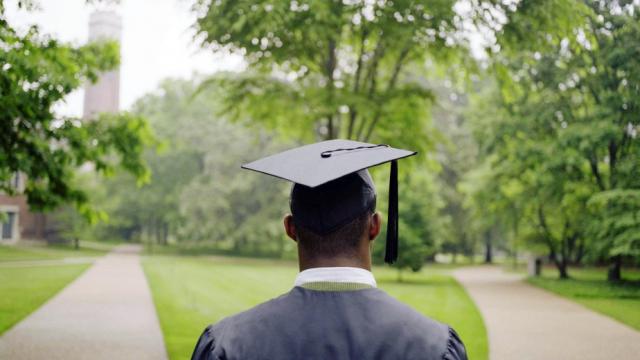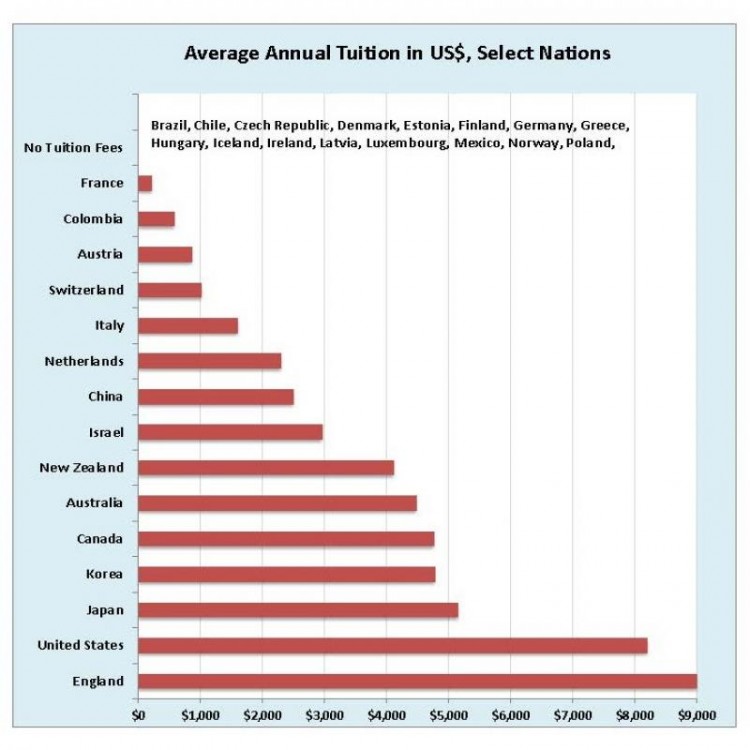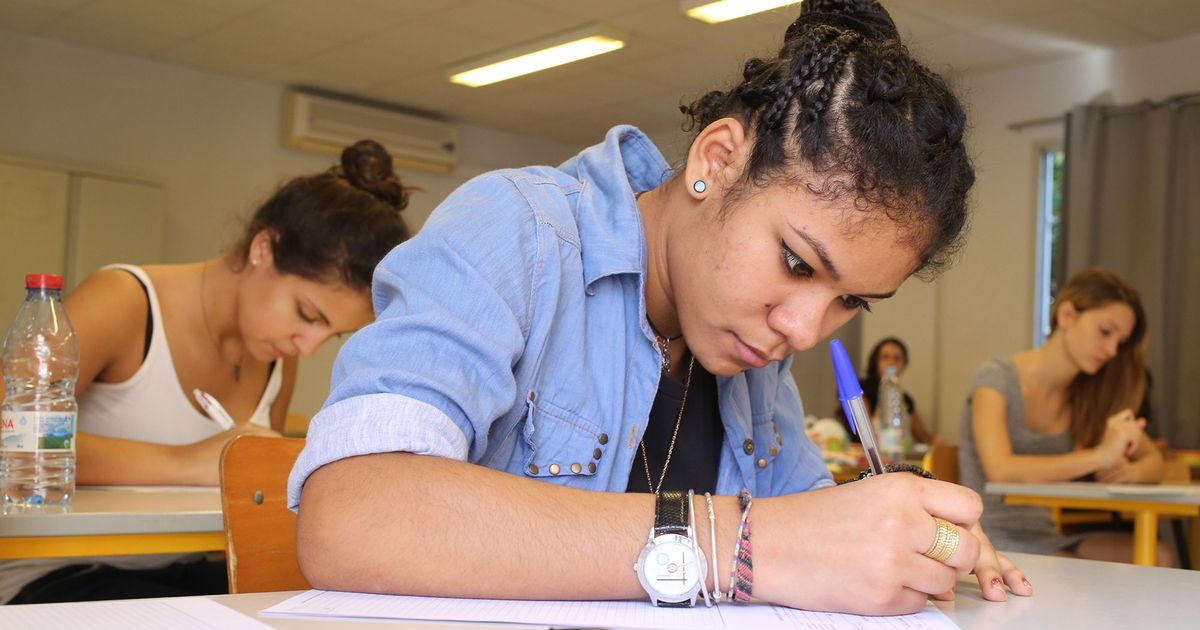
Higher education contributes to unprecedented student loan debt challenges in both developed and developing countries. College costs are rapidly rising, and student loan debts have reached disquieting record levels for both graduates and governments.
Most recent college graduates are burdened with heavy loan debt for years with many delinquent on repayment. In the United States, for example, some 7 million borrowers, or 14 percent, are in default, having gone at least a year without a payment on their federal student loans. One in four European Union citizens who earn diplomas in Britain return home countries without paying back their student loans.
Economies will struggle under the growing mound of student debt as young adults delay marriage, home purchases and childbirth and have less money to spend on housing, food, clothes or entertainment. As a consequence, governments can expect to confront a dilemma concerning increasing defaults on government-sponsored student loans: enforced repayment versus measured forgiveness. Likewise, students especially those with limited resources, struggle over whether to borrow, delay or forgo higher education.
British college graduates, for example, are estimated to have an average loan debt of $55,000, compared with an average of $20,000 five years earlier. Total student loan debt in the United Kingdom has reached nearly $100 billion. The average 2016 American college graduate has $37,000 in student loan debt, up 6 percent from the previous year, and total federal student loan debt now stands at $1.3 trillion, triple the level a decade ago. Similar student debt conditions are encountered in Australia, Canada, Norway and Sweden.
In some 40 countries, of which more than half are members of the Organization for Economic Co-operation and Development, public colleges charge no tuition. Elsewhere, average annual tuition costs vary considerably from several hundred dollars in countries like Belgium, Columbia and France to thousands of dollars in Japan, the United Kingdom and the United States.
While high tuition costs partly account for high student debt, free tuition does not necessarily mean students graduate without debt. Even in countries with free tuition, students are largely responsible for covering living costs and fees. In tuition-free Sweden, for example, students borrow money as frequently as American students do – about 70 percent have student loans – and Swedish students graduate with about $20,000 in debt.
A notable exception to high college costs and student loan debt is Germany. The expected cost of an undergraduate degree in Germany is about $2,200, and student debt is approximately $2,400. However, German officials are raising muted concerns about rising governmental costs for higher education. Behind closed doors, many education ministers admit that phasing out tuition fees was a wrong move fiscally and foresee reintroduction by 2020.
While college costs in developing countries may appear inexpensive in global comparisons, they are substantial for many individuals, especially students from rural areas. In China, for example, a farmer must work about 14 years to fund tuition at a Chinese university, while those in wealthier urban areas pay on average the equivalent of about four years of an individual’s annual income.
In addition, most developing countries face greater higher-education challenges than wealthier developed countries. In addition to being chronically underfunded and understaffed, schools in developing countries, especially in sub-Saharan Africa, struggle to manage growing demand for higher education and achieve international education goals.
Still, increasing numbers of young men and women recognize the need for a college degree in a competitive job market. The global number of students at the tertiary education level rose from about 160 million in 2008 to about 200 million in 2015. In addition, in striking contrast to the recent past, the average ratios of university participation of women have surpassed men. In nearly all OECD member countries, the majority of university graduates are women.
Likewise, the proportions of young adults graduating with college degrees have increased to record highs. Among OECD countries, for example, the average proportion with tertiary education increased from 26 percent for those aged 55 to 64 years to 42 percent for those aged 25 to 34 years. In some countries, including Czech Republic, Italy, Poland, Portugal, South Korea and Turkey, the proportions of young adults with tertiary education have more than doubled.
China has also made impressive gains in tertiary education enrollment. China, with the world’s largest college population, or 40 million students, has one in five of all college students in the world. In addition, the proportion aged 18 to 22 years attending college has skyrocketed from less than 2 percent in 1978 to 40 percent in 2015. With increasing expenditures and development of higher education, Chinese officials expect the proportion to reach 50 percent in 2019.
Governments, businesses and non-governmental organizations around the world also recognize the many benefits of an educated population for societal well-being and economic prosperity. The international community of nations has emphasized on innumerable occasions that obtaining a quality education is the foundation to improving people’s lives and sustainable development. Moreover, with the transformation of the world economy from physical capital to knowledge based, higher education becomes critical for national competitiveness. By and large, governments have concluded that more educated citizens contribute to economic development and stability.
In addition to societal benefits, prospective students and their families continue to believe that a college degree is worth the expenditures and aspire to obtain the best education possible. In addition to the knowledge and skills gained, college graduates, on average, have substantially higher incomes, improved employment prospects and financial security than those with just a secondary level diploma.
Despite widespread agreement about higher education’s numerous economic, social and cultural advantages, decisions about who should bear the considerable costs and when should student loan debts be forgiven remain contentious. Some, especially students and graduates, contend that higher education tuition should be covered by government taxes and student loan debts should be forgiven.
Some conservatives argue that governments should get out of higher education. Students should pay tuition and related costs as they stand to gain the substantial individual rewards of an education. Also, students have an obligation to repay their loans just as others are obligated to repay their debts for homes, cars, or other merchandise.
Responding to mounting calls for reduced taxes and easing the strain on public budgets, more countries are shifting the costs of higher education from government to students and families. A major consequence of that shift is not only substantial debt for the majority of college graduates, but also huge amounts for governments to recover from graduates. Concerns about the extent of the growing student debt and inherent difficulties with collection and default among young adults have led some analysts to conclude that private financial institutions and big business, not governments, should provide college loans to students.
Other issues – including growing demand, relevant curricula and qualified faculty – confront higher education in developing countries. However, the financial challenges of rising college costs and student debt undermine accessibility to higher education, burden college graduates with debt and saddle governments with administration costs and the thorny issue of loan defaults.
The standard US repayment plan is 10 years, but low incomes and poor job prospects force lenders to offer various repayment options, including extended repayment periods up to 25 years. The number of Americans aged 60 years and older with student loan debt borrowed largely for their children’s education quadrupled between 2005 and 2015 – the average increasing from $12,000 to $23,500.
Few deny that higher education yields great returns. The extent to which governments and individuals should cover the costs of higher education is an urgent question, and rising college costs and massive debt for graduates and governments are not the answer.
3 WAYS TO SHOW YOUR SUPPORT
- Log in to post comments















